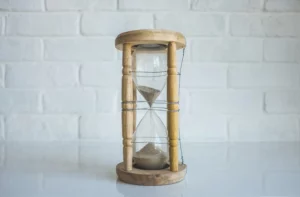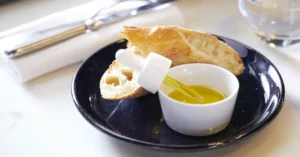
How CBD Can Improve Your Sex Life
Looking for something new in your sex life? With so much focus on the benefits of the cannabis plant, it’s no surprise that more

CBD interacts with our bodies by way of the endocannabinoid system (ECS). However, as most people are aware, food also has an impact on how our body functions. Many foods can alter the way that CBD interacts with your body.
Have you ever wondered if it’s okay to take your CBD with food? Maybe you have a specific meal plan or diet that you adhere to, and you aren’t sure of the potential effects that combining CBD with food might have on your body. Will it accelerate the rate at which the CBD gets absorbed by your body? Is there something about certain ingredients in a certain food item that might counteract the effects of taking CBD with food? Does it matter what kind of fats you take your CBD with?
These are just some of the many questions that people who want to start taking their CBD with food may ask themselves. In this article, we will explore how and why this interaction takes place and what you need to know about it.
CBD is a non-psychoactive compound, meaning it won’t get you high and lacks psychoactive effects. It acts as an analgesic, anti-inflammatory, and anti-spasmodic compound. That means it helps reduce pain, swelling, and muscle cramps.
CBD also affects your mood. Research suggests that it affects serotonin receptors in the brain and may increase levels of serotonin. Serotonin is a neurotransmitter that helps regulate mood and anxiety. CBD is metabolized in the liver. It’s quickly broken down into metabolites that are excreted in your urine.
The interactions between cannabidiol (CBD) and food may seem a bit mysterious or unclear. CBD is lipophilic, meaning that it has a strong affinity for fat. When CBD products come into contact with fat, it enters the bloodstream, and travels to our brain and other organs where it can have its therapeutic effect. The effects of cannabidiol are more easily observed when we consume foods that have high fat content. In fact, fat is the transporter that gets CBD into our blood. Taking CBD on an empty stomach can also have varied effects.
As we have discussed, CBD attaches to fat. Therefore, the more fat in your food, the more CBD will be absorbed and the stronger the effects will be. However, the amount of fat present in food is not the only factor that determines how easily CBD is absorbed.
The form of CBD that you consume also has a bearing on how well it is absorbed. CBD comes in many forms, such as oils, edibles, sprays, and capsules. These forms can be broken down into two distinct categories: CBD-rich hemp extract and CBD isolate. CBD-rich hemp extract is made from the whole hemp plant. It contains both CBD and other cannabinoids such as THC. CBD isolate is a pure form of CBD that has been isolated from other cannabinoids.
CBD-rich hemp extract is usually applied topically or infused into foods. On the other hand, CBD isolate is usually consumed orally.
As we have discussed, CBD interacts with fat, which is present in many foods, including milk, yogurt, peanut butter, and cheese. Therefore, consuming these foods with CBD can make it more easily absorbed into your bloodstream. For this reason, if you are consuming CBD orally, it is a good idea to pair it with high-fat food, like nuts, seeds, or avocado.
One important thing to keep in mind is that if you pair CBD oil with food that is high in fat, the CBD may not be as effective because it will be largely trapped in the fat. On the other hand, if you consume CBD oil with low-fat food, such as vegetables, it will likely be absorbed more quickly and may cause a stronger reaction.
As we have explored, consuming food products along with CBD can increase the amount of CBD in the bloodstream. However, if the food is also high in fat, it may also increase the amount of CBD that gets trapped in the fat. Unfortunately, there are some foods that are particularly high in fat. These include cheese, cream, peanut butter, and avocado. These foods may vary in the “healthy” fats they contain. Because these foods trap CBD in their fat, it may take longer to be released into your bloodstream. As a result, you may not experience the full effects of CBD until several hours later.
On the other hand, if you consume low-fat foods with CBD, the CBD may be released more quickly and may cause a stronger reaction. When eating foods that are high in fat, a good rule of thumb is to consume CBD either one hour before or two hours after eating.
When you consume CBD, it interacts with your blood, getting pulled into your bloodstream and traveling to your organs. This transfer is more easily achieved when you consume high-fat foods. However, if you consume CBD with high-fat foods, there is a chance that it will get trapped in the fat, causing it to take longer to have an effect.
With that said, hemp-derived CBD can be an extremely useful supplement, especially when consumed daily. While the effects of CBD are not immediate, they are long-lasting, and with daily use, you can expect to experience a multitude of benefits. To get the most out of your CBD, it is important to understand how it interacts with food.
Curious about trying CBD? Give CLEO CBD gummies a try! Check out our article on Tips on Incorporating CBD Into Your Daily Routine.

Looking for something new in your sex life? With so much focus on the benefits of the cannabis plant, it’s no surprise that more

As with many substances or supplements, when using cannabidiol, or CBD from the cannabis plant, daily, the human body will become accustomed to its

Are you tired all the time? Are you constantly yawning and struggling to get through the day? Do you need an energy boost? If

You’ve heard about the fantastic benefits of cannabidiol (CBD), and you’re eager to try it. But where do you start? Do you consume CBD
Ready to try CLEO, but not sure where to start? View our product guide to find your best fit